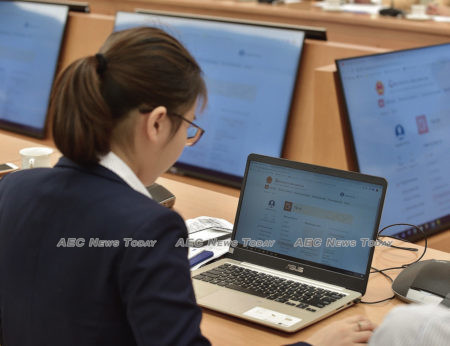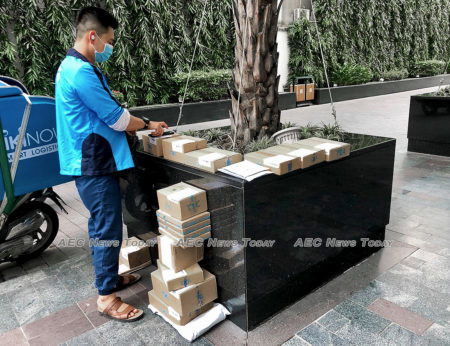There is no time when speed matters more than during a pandemic and the global SARS-CoV-2 outbreak is showing just how true these words are.
First detected in China last December, more than six million people have been infected and 370,000 killed in 215 countries and territories globally since.
Vietnam’s quick and decisive action saw it emerge early as one of the few countries that has, so far, coped with the outbreak relatively well.
There have been no COVID-19-related deaths in Vietnam and as of May 29 only 279 infections nation-wide, despite Vietnam’s role as a regional trade powerhouse and a tourism hotspot.
Many of Vietnam’s swift and effective public health responses have been enabled by information technology (IT). The country has put its high penetration of mobile phones (150 per cent) and the Internet (70 per cent) to great use.
Public health messages from authorities reminding citizens to take precautionary measures are regularly disseminated by text messages, on websites, and across social media. There are mobile applications for a universal medical declaration and to keep tabs on pandemic developments.

Seamless and timely citizen outreach and engagement is just one of many benefits digital technology provides in the face of a pandemic.
With governments around the world closing borders, cancelling large-scale gatherings, shutting down schools and asking people to stay home, digital technologies offer a way to adapt to this “new normal”.
The high level of digital penetration in Vietnam has meant that many Vietnamese have been able to conduct business online since the earliest days of the pandemic in late January, with digital technologies proving to be a key enabler to facilitate home-based work, remote learning, and home delivery of goods.
The National Public Services Portal (NPSP), which provides basic public services to citizens, saw its traffic surge from 11 million visitors in late January to over 28 million at the end of March, while the number of online service transactions conducted via the portal in March doubled to more than 23,000.
eCommerce booming during pandemic
Since the first SARS-CoV-2 case was reported in Vietnam the leading e-commerce site, Tiki, has seen an explosive growth in the number of purchase orders, while large retailers have seen a dramatic increase in online sales.

Saigon Co.op, for example, registered a five-fold increase in online sales in the week following the first case being detected on January 23.
While Vietnam’s efforts have been outstanding, it could minimise disruption during crises even further if it had full-scale digital infrastructure. In a more digitised Vietnam:
- a majority of public services, not just a few, could be provided virtually;
- a credible digital ID system could enable full accessibility to digital financial services and other private sector platforms;
- virtual learning platforms for students at all levels, even at public schools with limited resources, would enable students to learn despite prolonged periods of school closure;
- big data diagnostic capabilities could aid health surveillance and forecasting;
- streamlined and efficient administrative procedures could expedite disbursement of public and ODA investments—critical resources to stem an economic fallout in a time of great uncertainty;
- an IT-enabled social assistance program could reach vulnerable groups and businesses regardless of their remoteness through digital transfers — one pilot project financed by the World Bank (WB) demonstrates the feasibility of this approach. More than 2,600 people of ethnic minorities in Cao Bang Province have received their monthly social allowance via mobile money.
The list goes on. But the benefits of a digital Vietnam will not materialise overnight, and there are, of course, associated risks, most notably data privacy, that must be addressed.
What is needed are consistent and targeted investments and an accompanying legal and regulatory framework to set the rules on how to operate and manage data in the digital space.
The government of Vietnam is already committed to the digital transformation agenda.

Its efforts to build various e-Government systems such as the NPSP and the e-Document Exchange Platform, as well as ongoing initiatives to ramp up systems during the pandemic are laudable. And the country is also looking to harness the potential of digital payments technology as part of the new national financial inclusion strategy (NFIS) approved in January.
COVID-19 has been a test for every system, from the country to individual level, revealing both strengths and weaknesses. It is a reminder that Vietnam could benefit a great deal from digitalised services and should push the digital agenda even harder and faster.
Digital technologies not only help promote inclusive growth, they can also make us more resilient in times of crisis – enabling us to manage the impact of social disruption while remaining virtually connected, productive… and fed!
This article was written by Ousmane Dione, World Bank country director for Vietnam. It first appeared on Vietnam Investment Review (VIR) and then on World Bank Blog under a Creative Commons License and is produced here with its permission.
Feature video World Bank
Related:
- Vingroudevelops masked facial recognition tech for smartphones in virus fight( Deal Street Asia)
- COVID-19: Transitioning Your Business for Remote Work in Vietnam(Vietnam Briefing)
- Electronic technology will help improve fisheries management(Viet Nam News)
The World Bank Group consists of: The International Bank for Reconstruction and Development, The International Development Association, The International Finance Corporation, The Multilateral Investment Guarantee Agency, and The International Centre for Settlement of Investment Disputes.
By 2030 The World Bank aims to:
1. End extreme poverty by decreasing the percentage of people living on less than $1.25 a day to no more than 3%.
2. Promote shared prosperity by fostering the income growth of the bottom 40% for every country.
It aims to achieve this by providing low-interest loans, zero to low-interest credits, and grants to developing countries.
Latest posts by The World Bank (see all)
- Navigating COVID-19’s shock to the Malaysian economy – June 21, 2020
- Pilot study finds IoT AWD feasible for smallholder farmers in Vietnam – June 20, 2020
- Digital services in Vietnam thrive during pandemic, now for the next step (video) – May 31, 2020
- Improving Indonesia’s rice production through improved data collection – November 17, 2019

